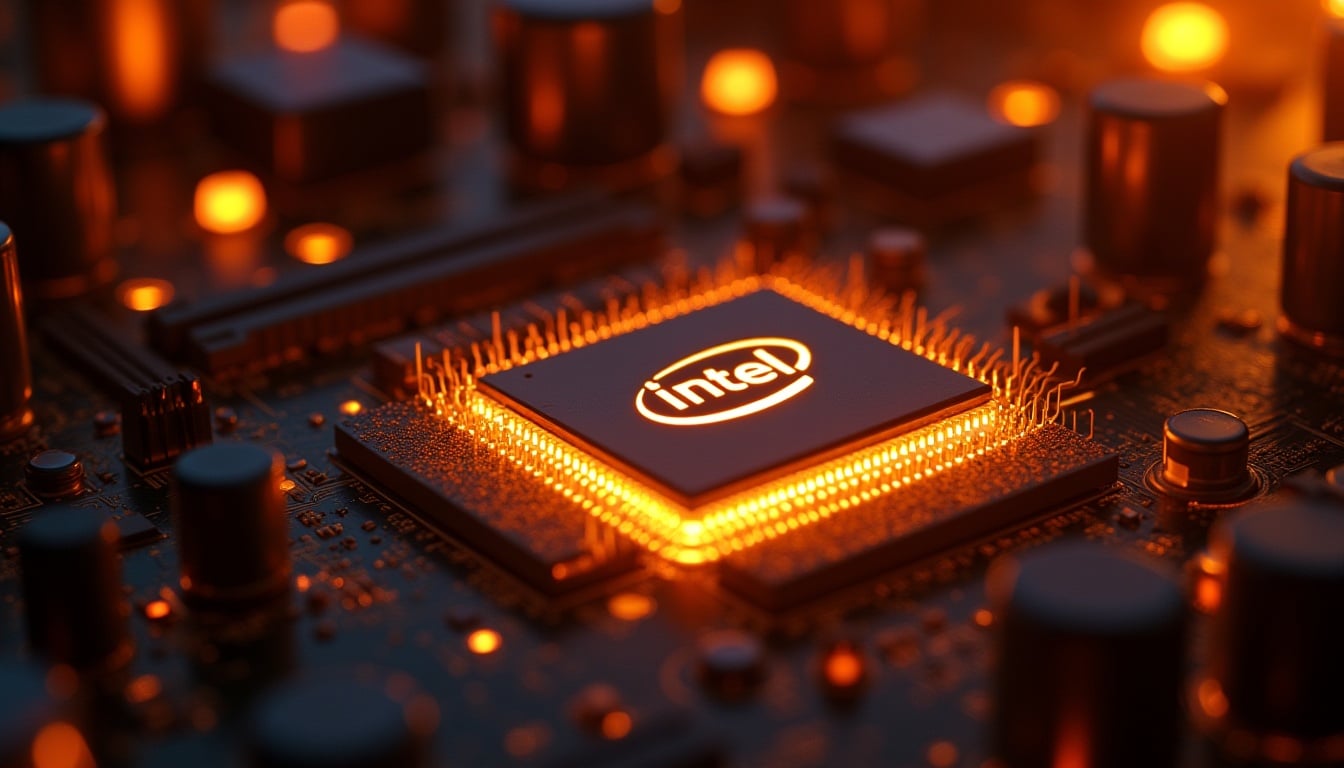The U.S. company posted a net loss of $2.918 billion in the second quarter of 2025 and confirms it will continue layoffs while restructuring its foundry business and slowing down key projects.
Intel closed its fiscal second quarter of 2025 with net losses of $2.918 billion, according to the company announced this Thursday. The figure represents an 81% drop compared to losses from a year ago, in a quarter marked by hefty restructuring charges, extraordinary amortizations, and a deteriorated gross margin.
Although revenue remained stable at $12.9 billion, earnings per share (EPS) stood at -$0.67 on GAAP basis. Adjusted for non-recurring items, non-GAAP EPS was -$0.10.
“We are making tough but necessary decisions to improve our execution, reduce costs, and regain competitiveness in the artificial intelligence and advanced semiconductors markets,” said Lip-Bu Tan, Intel’s CEO.
Intel Accelerates Cuts: More Job Cuts Ahead
After reducing its staff by 15% since the start of the adjustment plan, Intel confirmed that more layoffs are upcoming for the rest of the year. The company aims to end 2025 with about 75,000 employees, which would mean thousands of additional departures relative to the current total.
These layoffs are part of a restructuring process aimed at creating a “more agile, flatter, and efficient” organization. In the second quarter, personnel adjustments resulted in a $1.9 billion charge, adding to $1 billion in amortizations and non-recurring impacts.
Margins Under Pressure and Signs of Operational Weakness
| Financial Indicator | Q2 2025 (GAAP) | Q2 2025 (Non-GAAP) | Year-over-Year Change |
|---|---|---|---|
| Revenue | $12.9B | — | ±0% |
| Gross Margin | 27.5% | 29.7% | –7.9 percentage points (GAAP) |
| Net Loss | -$2.918B | -$441M | -81% (GAAP) |
| Diluted EPS | -$0.67 | -$0.10 | -76% (GAAP) |
The decline in gross margin from 35.4% to 27.5% year-over-year reflects not only extraordinary costs but also rising competitive pressure from TSMC, AMD, and new AI ecosystem players like NVIDIA.
Intel Pulls Back in Europe and Slows Down in Ohio
In a move that surprised the industry, Intel announced the cancellation of its expansion projects in Germany and Poland, which were part of its industrial strengthening strategy in Europe. Additionally, it will slow the construction of its large-scale factory in Ohio to align spending with actual market demand.
It will also consolidate its assembly and testing operations in Costa Rica, favoring its production centers in Asia. These decisions aim to optimize capital use and improve return on investments, which has been a weak point flagged by analysts in recent years.
Business Division: Modest AI Recovery, but Insufficient
| Business Unit | Q2 2025 Revenue | Year-over-Year Change |
|---|---|---|
| Client Computing Group | $7.87B | -3% |
| Data Center & AI | $3.94B | +4% |
| Intel Foundry | $4.42B | +3% |
| Others | $1.05B | +20% |
Revenue growth in the Data Center & AI segment was 4%, but it remains far behind the pace set by competitors. While NVIDIA dominates the generative AI chips market, Intel still largely relies on its Xeon line to maintain traction.
Although the company has launched new Intel® Xeon® 6 processors and plans for Panther Lake at the end of 2025, analysts are questioning whether its current strategy is enough to close the gap in the industry’s most dynamic segment.
Future Outlook and Challenges
For Q3, Intel anticipates revenues between $12.6 billion and $13.6 billion, with a projected non-GAAP gross margin of 36%. However, it expects to remain in loss territory (-$0.24 GAAP per share) or, at best, break even on an adjusted basis ($0.00 per share non-GAAP).
The company also confirmed a capital expenditure (CapEx) of $18 billion in 2025, aiming to significantly reduce it to between $8 billion and $11 billion after incentives and external contributions.
Can Intel Regain Leadership?
The upcoming quarters will be crucial to see if Intel can successfully restructure its operational model and recover its position in a chip market dominated by Asia and AI innovation. Transitioning to an open foundry model, executing its technological roadmap, and containing costs will be key factors.
The market continues to watch intently whether the Santa Clara giant can regain lost ground… before it’s too late.
Source: Financial News

